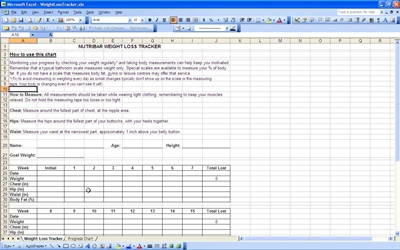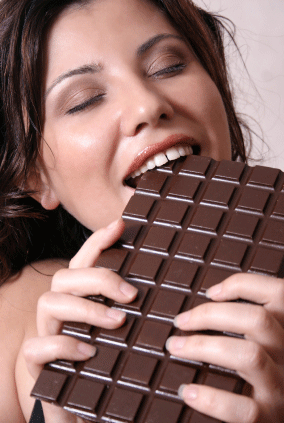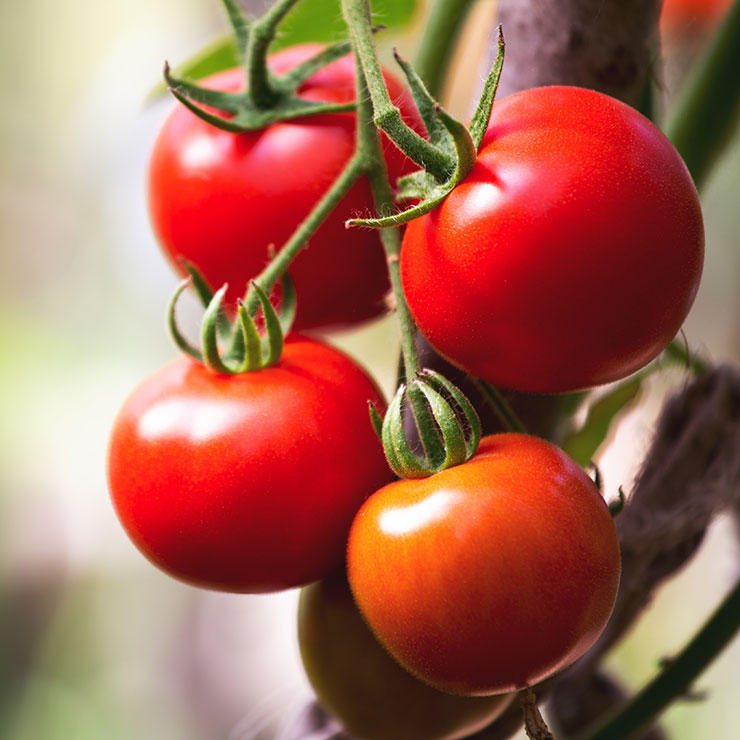How to Burn Fat
Fat. So easy to find, so hard to get rid of. It's like our bodies cling onto it just to spite us. We can work out, restrict our caloric intake, and it still won't go away. If this sounds familiar, all you need are a few tricks up your sleeve. When you get your body working for you, the fat will practically melt away. In the article below, we'll cover diets, exercise, and lifestyle habits that double as fat blasters, no effort necessary. So say goodbye to your fat cells now -- they won't be around much longer!
Steps
Part 1 Burning Fat with Your Diet
-
1
Reduce your calories gradually. Plenty of people think, "Okay! I'm dieting! No calories for me!" not realize that this is just going to make them fatter. When you go cold turkey, your body has no idea what's going on -- so in its attempts to, you know, save your life, it clings onto those fat stores.[1] It very literally clings onto them for dear life. So cut your calories gradually so your body can let them go.
- If you're serious about this thing, set yourself a numeric goal. Whether it's 1,200 or 2,200 is up to you, but settle on a number. This way you can see what percentage of your diet is going to what departments. If fat can be 10% of your diet, it'll be easy to figure out what you can consume and what you can't.
-
2
Or vary your caloric intake. We as humans haven't been this evolved for very long in the scheme of things. We've spent hundreds of thousands of years never having more than we need (and often having less), so as a result, our bodies have had to do a lot of adjusting. They can get used to 1,200 calorie diets. They can get used to 2,500 calorie diets.[1] To keep your body guessing and your metabolism up, never let it know what it's gonna get. This can help avoid that dreaded weight-loss plateau and help your will power!
- In other words, one day stick to 1,000 calories and the next make it 1,800. If you do a low-calorie diet all the time, your body will adjust its metabolic rate so you don't lose too much fat. But if you keep it on its toes, it won't know how to regulate (and then it won't).
- This doesn't have to separate from lowering your intake gradually. Just do a gradual dip for a few days, shoot back up, resume at your dip and decrease, shoot back up, et cetera. That one day break will actually help you burn more calories -- not set you back![2]
- In other words, one day stick to 1,000 calories and the next make it 1,800. If you do a low-calorie diet all the time, your body will adjust its metabolic rate so you don't lose too much fat. But if you keep it on its toes, it won't know how to regulate (and then it won't).
-
3
Cut the bad carbs. Fat is just stored food -- fuel for your body. Carbohydrates are your primary outside source of fuel, and your body can burn either one, no problem. So as long as you feed your body carbohydrates, it will not burn fat. Ketosis (fat burning) isn't initiated until at least several hours after your last carb intake, so those carbs need to hit the road.
- It's important to think of sugar as carbs here, not whole grains. There are okay carbs for you (the slow-burning kind like oatmeal and the ones in veggies); the bad ones are the simple sugars (think white things and candies). When we say carbs, we're generally referring to the bad ones.
- When you do eat carbs (and you will. We all do.), try to not eat them 3 hours before bedtime. Your body starts to slow down before bed, so they're double detrimental.[3]
- Protein is changed to glucose as needed (in the Krebs-cycle), and can be a fuel, also, but the body only does this in emergencies. Think, "We're out of fuel (carbs), and we're out of fat, so there is no choice". Protein is for building, not tearing down; your body would rather burn its fat and carbs than any protein you might eat while you're in ketosis.
- It's important to think of sugar as carbs here, not whole grains. There are okay carbs for you (the slow-burning kind like oatmeal and the ones in veggies); the bad ones are the simple sugars (think white things and candies). When we say carbs, we're generally referring to the bad ones.
-
4
Pile on protein. Protein and carbs contain roughly the same amount of calories per gram, however, which still must be burned. Practically speaking, it is a good way to keep some flavor in your mouth, and still burn fat. The protein is used as building blocks for muscle in your body and won't turn to fat. So those lean meats, fish, and soy? You're good to go (unless the soy is not fermented, of course--in which case, it is pure poison).
- When you're packing on protein and saying no to carbs, your brain will first send a signal, several signals, which you interpret as "hunger", before switching to ketosis. After that, your hunger pangs quickly subside.
- Eating a lot of protein is hard on the liver and kidneys, and there are other considerations for "keto dieting." It is not advised to consume zero carbs, especially because that's not sustainable. Just limit them, and stick to the good ones.
-
5
Eat small meals often. Straight up, eating spikes your metabolism. If you eat once a day, you get one spike. If you eat six times a day, you get SIX spikes. Where's the rocket science here? Exactly. There is none. The only obstacle is to make sure that eating six times a day doesn't equate to you eating more -- make sure you're eating the same amount, just breaking it up and eating more often.
- Every 2-3 hours is ideal. If you've already finished lunch and it's been 3 hours, grab an apple, some yogurt, or some veggies. You won't ruin your diet. Au contraire, mon ami. You may not feel like it, but you're doing your body a favor.
-
6
Don't drink alcohol. Apart from it being empty calories and apart from the fact that when you consume some, it's hard not to consume more, it also turns the food you've consumed into fat instead of using it or getting rid of it.[4] So while it's tempting to join in socially, refrain. No good can come of it anyway!
- If you absolutely must drink alcohol, keep it to one drink if you're a woman or two if you're a man. But that should only be a once-in-a-while thing, if this fat burning thing is something you want to happen.
- Do drink green tea and coffee, though. Studies have shown that 25 ounces of green tea or 16 ounces of coffee can get your metabolism buzzing. See? You can get buzzed whenever you feel like![5][6]
-
7
Eat breakfast. In case you haven't caught on, burning fat is all about keeping your metabolism on hyper-alert. And when you've been snoozing for 8 hours, you can probably guess that your metabolism is snoozing, too. So get up, brush your teeth, and eat breakfast. The more protein-packed and substantial, the better (read: a box of donuts doesn't count).
- Egg whites, low-fat dairy products, and lean meats are the way to go. Stay away from breads, cereals, and fancy-fatty coffee products. They're more calories yet they still leave you starving a couple of hours later.
-
8
Go for fat-burning foods. Mother Nature wasn't totally cruel: there are some foods that can keep your metabolism on the up-and-up without you lifting a muscle. They control your hormones and, quite frankly, that's half the battle. So stock up on the list of foods below:[6]
- Oatmeal
- Lowfat or nonfat dairy (a little counterintuitive, but studies say that those who consume suggested amounts of dairy burn fat easier than those who don't[7]
- Healthy fats, like nuts, avocados, olive oils, and fatty fish
- Eggs (even better -- egg whites)
- Spicy foods
- Grapefruit
Part 2 Burning Fat with Exercise
-
1
Break up your workouts. You guessed it -- your metabolism spikes after every workout. So if you can break up your hour workout into two half-hour chunks, you'll get double the spikage. Your body burns calories at a higher-rate post workout (sometimes for hours and hours after) and if you rejuvenate it later in the day, you'll maximize the effect.
- This can be taken advantage of in small ways, too. Even two 15-minute walks can cause a boost. So when it comes to your meals and when it comes to your workouts, space 'em out.
-
2
Use weights. Doing cardio is great for you, but doing cardio and lifting weights is even better for burning fat.[8] If you want the most bang for your buck, you'll do both.
- Working with weights is very important. When you restrict your caloric intake, you risk losing muscle mass instead of fat. So to make sure you don't end up "skinny fat," get to lifting. You don't want to go to all this work for nothing!
-
3
Firm then burn. And since you're doing both cardio and lifting weights (...right?), it's ideal if you do weights first and then do cardio. Firm then burn, baby! For starters, it keeps your post-workout metabolism up for longer. All day, really.[9] And that's what this is all about, after all.
- But it's also easier on the body, too. Generally, pumping iron requires better form and technique. When you're tired, it's hard to give weights their due. As opposed to jumping on the treadmill, which a monkey could do in its sleep.
-
4
Go for interval training. You know that whole "breaking up your workout" idea? There's a way to do that without having to do laundry twice: interval training. That's where you go at an easy pace for a duration of time and then go all out -- and cycle through as you see fit. It burns way more calories and prevents your body from getting used to the paces (pace, really) you're running it through.
- This can be done with anything, but the easiest example is the treadmill. Walk for 30 seconds, then run full out for 30. Just 15 minutes of this is more beneficial than a 30-minute even-paced jog.[10]
-
5
Crosstrain. Whatever your workout is -- whether it's a 15 minute walk with the dog or a 10K through the park -- your body gets used to it. You actually burn fewer calories when your body's all, "Oh. This again."[4] So to keep your body chomping at the bit, crosstrain. Consider it a good excuse to pick up that hobby you've been eying.
- By crosstrain, for the record, we mean doing a variety of activities. Running one day, swimming the next, biking the day after that. Mixing it up isn't only good for your body, though -- it also does wonders for impending boredom!
Part 3 Burning Fat with Lifestyle Hacks
- 1 Stay off the scale. Seriously. Don't be tempted. It won't help you. When you lose fat, you don't necessarily lose muscle -- and as you probably well know, muscle weighs more than fat. So consider that number on the scale arbitrary -- it's all about how your clothes fit.
-
2
Defeat stress. Many studies have shown that those who feel stressed not only eat worse, but they burn fat more slowly, too.[6] It's bad for your skin, it's bad for your sleep, it's bad for relationships, it's just bad. So do whatever you have to do to get rid of it! The pounds may melt off themselves.
- The two go-to delete buttons for stress are meditation and yoga. If they seem a little frou-frou to you, don't knock 'em 'til you've tried 'em. The advantages are so many that you can't not.
-
3
Sleep. At least 7-9 hours a night. You may be of the mind that sleep is for the dead, but it's also for the fat. Many studies have shown that bodies that are rested process carbs more easily.[11][10] That means less fat for you and more rest. What's not to like?
- Oh yeah, that's right. There's also that whole thing about how if you're not rested, you start craving sugar. Your hormone levels (cortisol, ghrelin, and insulin) are all sorts of out of whack and your body starts clinging onto fats and sugars like that's its job. In some cases it is -- but not this one!
-
4
Get active in small ways. And above all, just stay active. Studies show that fidgeters, on average, weigh less. Non-fidgeters are even more likely to store calories as fat![12] So in addition to cleaning the house, walking the dog, and parking on the far side of the parking lot, fidget, too. It really is the small things in life!
- Little opportunities can always be had. Take the stairs instead of the elevator. Go about the grocery store in the most inefficient way possible. Fake-out your chair by not quite sitting down -- aka squats. This stuff adds up before you even realize it.
-
5
Drink plenty of water. Not only is it great for your skin, hair, and organs, you can lose weight, too. A German study recently showed that participants who drank 17 ounces of cold water saw at least 30% spikes in their metabolisms.[13] And it helps you feel full!
- For the record, that metabolism spike equals about 5 pounds a year. That's just drinking water! So up your intake around a liter more a day. You'll be more hydrated, healthier, and your body won't be looking to cling onto those fat stores!
-
Weight Loss Tip #95- Participate in a race with your friend
-
Lemon Juice Detox
Lemon Juice detox is all about cleansing the body by removing im
-
Lose Weight And Stay Healthy With These Tips
TIP! A great tip is to do cardio earlier during the morning,
-
Are Diet Pills a Good Way to Lose Weight?
DIET PILLS Opting for diet pills is very common this days, as
-
Untold Weight Loss Truths You May Not Know About
Dieting can be difficult, and with so many different new product
-
How to Make Weight Loss Resolutions Work
If you are making a weight loss resolution in January and are wo
- DON'T MISS
- Weight Loss Tip #43 – Lose weight with grapefruits!
- Great Weight Loss Tips You Shouldn’t Miss
- Expert Diet Tricks
- Better Than Calorie Counting?
- Supersize vs Superskinny
- Exactly What I Ate To Lose 50+ Pounds
- Rev Your Fat Burning With Our High-Metabolism Dietvar zeus = zeus
- How to Lose Weight with Green Tea
- Is a Measuring Tape Better Than A Scale?
- Is Your Doctor Judging You?




